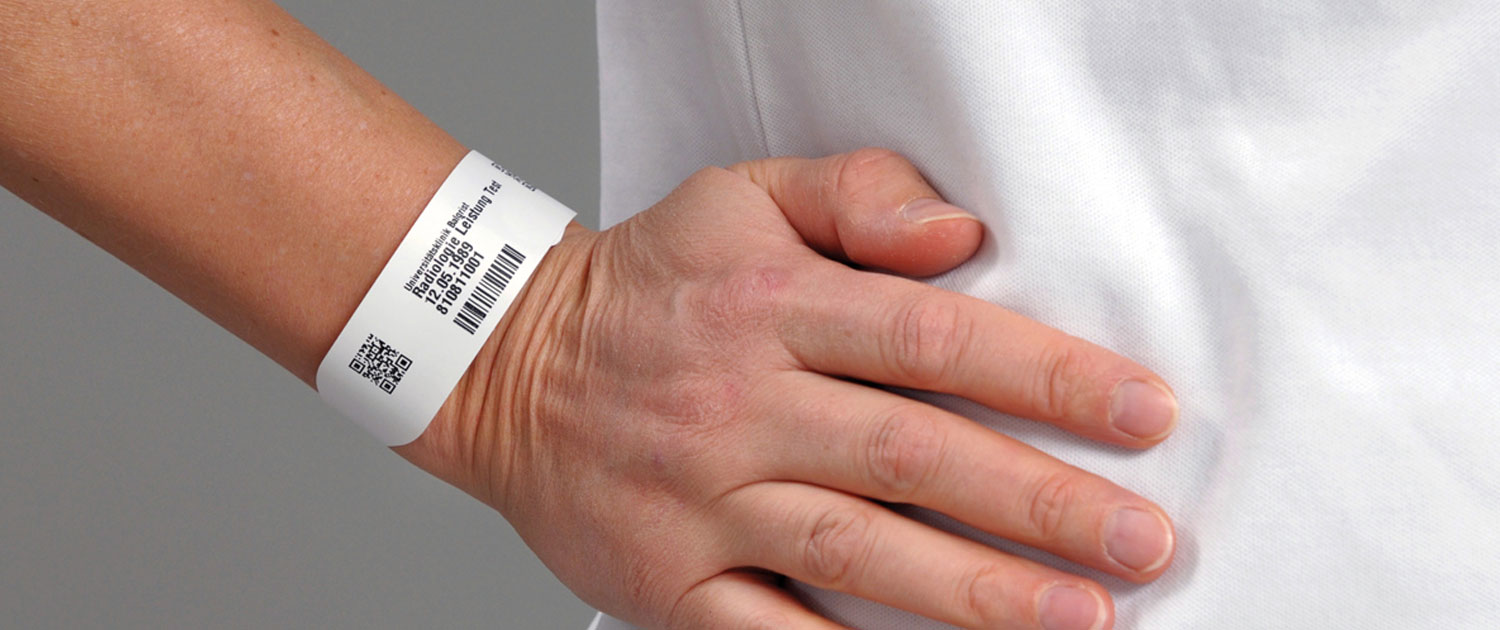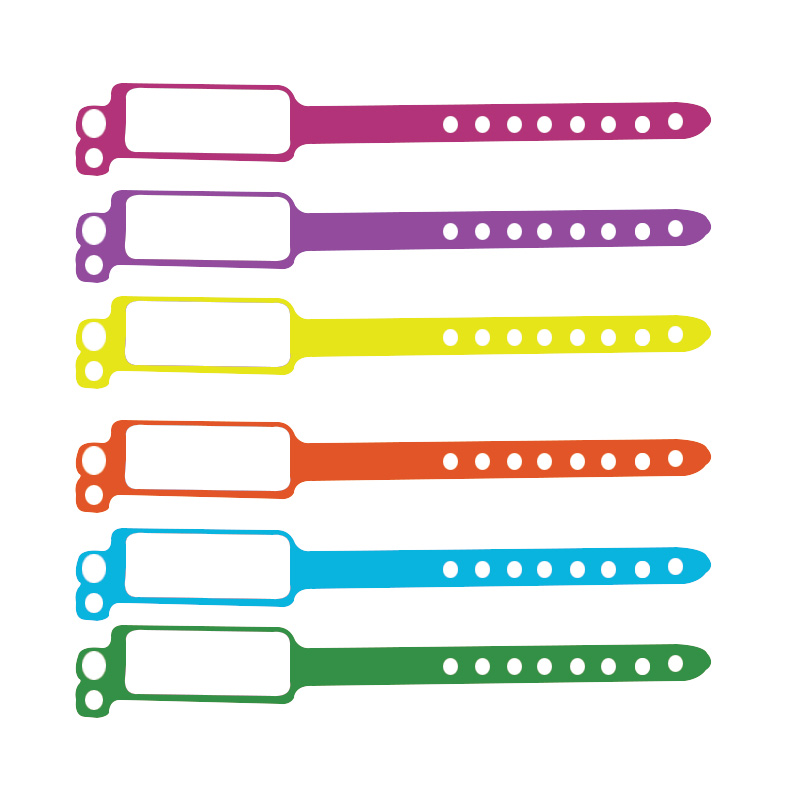Exploring the Benefits of a Patient Identification Band in Preventing Medical Errors
Exploring the Benefits of a Patient Identification Band in Preventing Medical Errors
Blog Article
Exploring the Various Sorts Of Patient Identification Band Utilized in Clinical Facilities
In the intricate globe of medical care, the crucial duty of Patient Identification bands commonly goes undetected. These bands, differing from easy paper wristbands to innovative RFID bands, develop the backbone of Patient security protocols, ensuring accuracy in Patient Identification. The large variety of these bands, each with its special benefits and constraints, is frequently forgotten. As we browse through this subject, one might get insight right into the subtle intricacies and vital significance of such bands in clinical facilities.
Comprehending the Relevance of Patient Identification Bands
While they may appear like mere devices, Patient Identification bands play a vital function in clinical facilities. These bands act as an important tool for verifying Patient identification, preventing medical mistakes connected to misidentification. The bands usually display important info such as the Patient's name, age, blood group, and any type of well-known allergic reactions. They enable health care specialists to quickly access this vital info, therefore facilitating precise and punctual clinical therapy. Patient Identification bands also aid in enhancing management jobs, ensuring precise record-keeping and invoicing. In spite of their simpleness, these bands symbolize the concept of Patient security, a foundation of quality healthcare. Without them, the danger of medical mistakes, and consequently, Patient harm, might considerably boost.
Traditional Paper Wristbands: Their Usage and Limitations
Traditional paper wristbands have actually been a staple in Patient Identification throughout numerous medical facilities. While their use prevails, they harbor certain constraints that might affect their effectiveness in Patient monitoring. This section will concentrate on the range of their application and the intrinsic disadvantages connected with their usage.
Paper Wristbands: Usage Scope
In the realm of Patient Identification, paper wristbands have long held a crucial duty. These bands are generally used in outpatient setups, where the Patient's remain is short-term. The wristbands contain important information such as the Patient's name, date of birth, and an one-of-a-kind Identification number. This basic, yet reliable system, permits medical professionals to promptly and properly determine patients, guaranteeing the appropriate treatment is provided. Paper wristbands are additionally made use of in emergency situation situations, where rapid Identification is critical. Their use encompasses events like blood contribution drives and mass inoculation programs, even more stressing their convenience. In spite of innovations in modern technology, the humble paper wristband stays a trusted and cost-effective service for Patient Identification in various medical care situations.
Limitations of Paper Wristbands
Regardless of their prevalent usage, paper wristbands are not without their disadvantages. Their physical longevity is one of the considerable restrictions. Direct exposure to water, sweat, or misuse can make them unreadable and even trigger them to break down. Additionally, paper wristbands commonly do not have the technological abilities of more modern alternatives, such as barcoding or RFID chips, limiting their capability to just presenting created information. The inability to upgrade or change the information on the wristband is one more drawback. In addition, if the information is transcribed, readability can be endangered, bring about possible misidentification. Paper wristbands can create discomfort or skin irritation to some individuals, particularly when worn for extended durations.
Barcoded Wristbands: Developments in Patient Identification
While Patient Identification has actually long been a crucial over here element of medical care, the advent of barcoded wristbands represents a considerable jump forward. These bands take advantage of the simpleness of barcoding modern technology, permitting for Patient information to be swiftly checked and accessed. They boost the speed and accuracy of Patient Identification, lowering the risk of clinical mistakes associated to misidentification.
Radio Frequency Identification (RFID) Bands: a Step In The Direction Of Futuristic Healthcare
The development of Patient Identification bands has brought concerning the emergence of Superhigh frequency Identification (RFID) Bands (patient identification band). These cutting-edge gadgets present crucial benefits for health care centers, offering a much more reliable and technologically advanced ways of Patient Identification. The execution of RFID in medical care is a substantial action in the direction of a more advanced approach to Patient monitoring and safety Your Domain Name and security
Comprehending RFID Bands

RFID Bands: Secret Advantages
Mainly, these bands enhance Patient safety by giving exact, instant Identification, thereby reducing medical errors. RFID bands can save a vast amount of Patient data, consisting of clinical background and allergies, allowing customized treatment. On the whole, RFID bands represent a significant innovation in Patient Identification modern technology, profiting both patients and healthcare suppliers.
Applying RFID in Healthcare
These bands offer a seamless way to track and determine patients, ensuring their security and boosting effectiveness in treatment procedures. RFID bands decrease clinical errors by supplying exact Patient Identification, which is vital in stopping misdiagnosis or wrong medication administration. Thus, the implementation of RFID bands is a significant action in the direction of boosting Patient security and healthcare shipment.

Color-Coded Wristbands: Aiding in Quick and Accurate Medical Diagnosis
In anonymous the busy environment of a medical center, color-coded wristbands have emerged as vital tools for swift and specific Identification of an individual's clinical condition. These wristbands, used by people, carry certain shades that correspond to different medical problems or standings. This system is designed to use prompt visual hints to medical care providers, improving Patient safety and security and care top quality.
Strategies for Efficient Application and Monitoring of Patient ID Bands
Achieving ideal usage of Patient Identification bands necessitates a well-structured technique for their application and monitoring. The initial step involves training all health and wellness workers on the relevance of appropriately applying and reading these bands. Secondly, health centers should systematize making use of ID bands throughout all divisions, guaranteeing uniformity and decreasing inconsistencies. Regular audits should be performed to validate adherence to plans and to remedy any type of variances. Patient education is also essential; clients must understand the objective of the bands and the demand for their continuous wear. patient identification band. It's essential to have a back-up strategy in location, such as barcode scanning or biometrics, to ensure that Patient Identification is never ever endangered.
Verdict
Patient Identification bands are important in medical centers to make sure safety and security and accuracy. Efficient application and monitoring of these bands can significantly decrease clinical mistakes, boost efficiency, and enhance general Patient treatment.
These bands, differing from simple paper wristbands to advanced RFID bands, form the foundation of Patient security protocols, making sure precision in Patient Identification.The evolution of Patient Identification bands has actually brought about the introduction of Radio Regularity Identification (RFID) Bands. Overall, RFID bands stand for a significant development in Patient Identification innovation, profiting both people and medical care providers.
RFID bands reduce medical errors by supplying exact Patient Identification, which is essential in protecting against misdiagnosis or incorrect medication management. Patient education and learning is additionally crucial; individuals must understand the objective of the bands and the need for their continuous wear.
Report this page